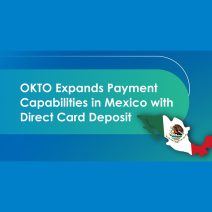
Exclusive interview: Gaming1’s Chief Business Development Officer, Victor Araneda details the company’s US growth strategy
Following its joint venture with Delaware North, Gaming1 is moving its focus to the exciting US market, where it recently opened its latest office in Miami.
With plenty more developments in the pipeline, Gaming Americas spoke to the company’s Chief Business Development Officer, Victor Araneda, about its plans for the US market and what will differentiate them from the competition.
Talk us through GAMING1’s 2021 – what were your key successes and how has your entrance into the North American market performed so far?
Last year was extremely busy as we completed our US joint venture with Delaware North and set up our platform to debut in the first few states. We worked incredibly hard in putting together a state-of-the-art product and a very exciting collection of talent for our joint venture in the US, Gamewise, including our General Manager John Worthington.
On top of that, we recently opened our new offices in Miami, and I speak for all of us when I say we’re looking forward to launching operations with the new technology at our disposal. It was a fantastic year, but now it’s all about 2022 as the US opportunity opens up more and more and we will be on hand to help our partners take advantage.
With upcoming events on the calendar in the US, how do you plan to showcase what GAMING1 brings as a unique partner to the market?
It’s been so long since we’ve been able to have everyone under the same roof, so I think we are all looking forward to that in and of itself. Having spent the better part of the last 17 years travelling to events like these, I’m eager to get back on the road. Rest assured, I will be in attendance at all the upcoming events introducing prospective partners to our technology and unique business model.
Gamewise, as a turnkey operator with strong casino lineage, understands the need to strengthen the potential of our land-based partners and the bond they’ve created over time with their patrons. We bring the technology and know-how to expand that relationship into the interactive environment. Our platform was created with the earned secret of that lineage. It is flexible and modular because we believe that an effective interactive offering should have a multi-provider approach for both sports betting and iGaming, just like an operator would have on a casino floor.
Going into more detail on your Delaware North partnership – what has the deal entailed and what are your plans for growth together?
Delaware North and Gaming1 share so much of the same DNA and business philosophy. Two entities still owned by families that embody the spirit of true partnership in the United States and Europe. These are businesses built with a client-oriented approach which is reflected in our technology. We truly understand the strength of tradition and the power of brand and the value of land-based converging into the interactive environment.
Gamewise will be looking to not just operate in jurisdictions where we have direct access but to also share our technology with partners that share the same vision and want to bring their businesses into the digital world in other states.
Looking at the US market as a whole – which states has GAMING1 got its eye on for future plans?
It’s no big secret that we’re planning to deploy our technology in all states where Delaware North currently operates. We’re also putting together an ambitious plan that includes market access and B2B partnerships. Our parent companies were built through partnerships, and we look for Gamewise to continue that tradition and bring that experience to the online arena through partnerships. The exciting thing about the US market is how new it is and how fast it is evolving. We are certainly looking forward to assessing the landscape as it regulates further throughout 2022.
How key do you believe the likes of New York and Florida are going to be in terms of new states fueling a further surge in US betting handles?
It’s somewhat disappointing to see that two of the largest and most influential states in the union have taken so long to come on board and produce competitive legislation. In terms of fuel for the industry, our eyes and praise have long been for states that have embraced online casino side by side with sports betting, with the most recent examples being West Virginia and Michigan.
We believe that legislation that allows for all verticals and robust products should be the norm as they offer the most value for players and all stakeholders. There are hopeful signs of moving in this direction in a number of states.
Moving further North to Canada, what potential do you see the market holding?
Gaming1, together with Delaware North, are looking forward to the continued rollout of legislation across Canada. It’s a market we feel will do very well and that is taking a conscientious approach to regulation.
Several jurisdictions in the country have been predicted to be some of the most attractive in North America. One very reliable recipe for success for any state is a high population, highly competitive market, sizable player volumes and high bonus offers. The combination of these elements makes Canada one to keep an eye on.
And last but not least, looking at LatAm, where you’ve already achieved plenty of success – how do you see the LatAm market shaping up for 2022?
We feel there’s still so much to do in Latin America in terms of specific regulation and market development. On top of that, weakening economic prospects in some of these major countries, including Brazil, continues to make this difficult to predict. The region’s economy still seems to be sluggish and trying to bounce back from the pandemic. Some signs indicate a potential rebound, however, particularly in countries with high vaccination rates.
It feels like only yesterday, but it’s been over four years since Colombia passed their clearly successful regulation model and yet so many of their neighbors have failed to follow that example. Gaming1 still feels bullish about the prospects of the region and will be waiting with bated breath for new openings.










